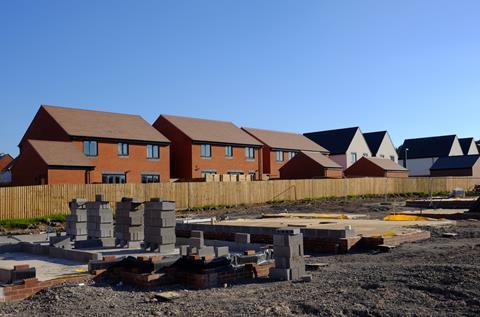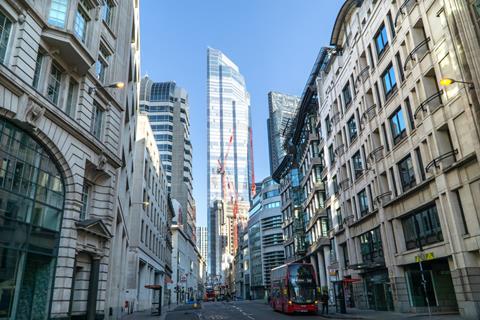Latest purchasing managers’ index shows ‘hot’ market is feeding fastest rise in construction costs in 20 years
Housebuilding work continued to grow apace in April but the rate of growth fell back from its recent high in March, according to the latest construction purchasing managers’ index.
However, the body said the rate of construction cost inflation had grown for the seventh consecutive month, and had now hit the highest level ever recorded.

The IHS Markit UK construction PMI, carried out for the Chartered Institute of Purchasing and Supply (CIPS), recorded housebuilding activity at 61.4 in April, where any figure above 50 represents growth, down from the 64 recorded in March.
The index figure represents the 11th consecutive month of growth in housebuilding activity, with the industry growing production consistently since the easing of the first spring 2020 lockdown.
The survey is the latest in a string of reports to warn on growing materials pressures, with respondents saying a rapid rise in demand for construction products and materials had continued to stretch supply chains in April.
The latest lengthening of suppliers’ delivery times was the third greatest since the survey began in 1997, exceeded only by those seen during the lockdown in April and May last year.
And higher prices paid for a wide range of construction items contributed to the fastest overall rate of cost inflation since the survey began in April 1997, with the index at 84.6, up from 77.8 in March. Steel, timber and transportation were among the most reported items that had gone up in price.
Michael O’Shea, construction partner at law firm, Gowling WLG said the materials shortages would lead to an increase in alternative building methods.
“[These] will focus the industry to continue to develop alternative ways of delivering projects with the use of modular and prefabricated construction in order to balance the increasing demand on traditional supply chains to ensure they can deliver on the market demands.”
A boom in investor confidence in the commercial sector also contributed to the growth, the data revealed.

The commercial sector took a significant hit during the pandemic, with the “work from home order” raising questions about whether the office market will ever return to normal.
But the latest IHS Markit/CIPS UK construction PMI update has revealed a second strong month for the sector, with the survey figure remaining high at 62.2 after barrelling up to 61.7 last month from a score of 53.3 in February.
Max Jones, director in Lloyds Bank’s infrastructure and construction team, said: “Forecasts of the death of the city were premature. What many returning to [the office] over the last few weeks will have noticed is the speed and scale new developments have cropped up at. This has bolstered the bottom lines of commercial contractors and positioned them well for further growth and investment going forward.”
Overall, the headline IHS Markit/CIPS UK construction PMI total activity index posted 61.6 in April, down only fractionally from March’s six-and-a-half year peak of 61.7.
A third straight month of growth has increasingly made the score of 49.2 in January, when the third lockdown was imposed and the death toll from covid topped levels seen in the first wave, look like an anomaly.
The growth contributed to the steepest rate of job creation across the construction sector since December 2015.
Scape chief executive Mark Robinson said contractors had to think about long-term changes being accelerated by the building boom.
“It’s important that contractors maintain this momentum and use the sustained levels of investment from central government as a catalyst for positive change. Our recent consumer research indicates that the general public wholeheartedly endorse investment in construction projects that create social value.”










No comments yet